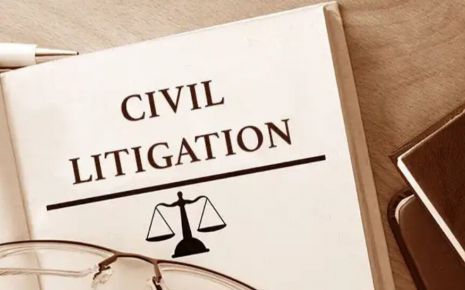Generic term ? Domain name registration ? Trademark registration. A loophole perhaps?
With the colossal progression in the e-commerce world, most businesses have
exponentially expanded to become globally prevalent. Under the umbrella of the
domain name system, individuals, businesses, entities are enabled to acquire
generic and catchy domain names at ease. On the other hand, trademark laws are
stringent and governed by adjudicatory bodies in a structured fashion.
This article aims to analyze and highlight the conundrum that applicants face while seeking registration of generic terms as trademarks. There is no predefined legislative formula to determine whether a term is generic or not. The Courts of The United States give utmost importance to the pivotal principle of public perception under the Lanham Act, 1946 to assess the genericity of a term.
Two contradictory decisions by the United States Courts on the assessment of genericity of two terms that appear to be similar in nature have been discussed in-depth in this article. In due course and upon diligent research on both the judgments, this article observes that deciphering a term's character of genericity based solely on public perception may not be ideal or comprehensive due to the same being vulnerable to manipulation.
Furthermore, there is an upsurge in the registration of generic terms as domain names which lead to increased complexity in adjudication thereof for registration as trademarks. The article also explores various shortcomings that include but are not limited to 'initial interest confusion', 'undue competitive advantages', 'cyber-squatting', 'conflict between domain name & trademark registration', and so on. The question still remains unresolved whether the addition of a second-level domain name to a generic term entitles the resulting term for trademark protection.
A registered trademark becomes generic when it becomes so common and readily identified with the respective product/service that it simply starts drawing inference to the type or class of goods/services it represents.
Acquired distinctiveness: savior in disguise
Distinguishing characteristics that are not inherent but attained over time by virtue of consistent prevalence of the mark, leading to the creation of a secondary association with its source as opposed to its primary, descriptive meaning results in achieving acquired distinctiveness.[3]
Continuous use of the trademark in question, its prior applications/registrations in other jurisdictions/countries, advertising and promotional materials that specifically show or promote the mark in use as a trademark and source-identifier, sales figures, figures of expenditure for advertising and promotion, publication in national as well as international magazines/journals, goodwill, reputation and its familiarity amongst and most importantly source identification power of consumers, etc. are the pertinent factors through which acquired distinctiveness can be gauged.
Therefore, the only way to consistently obtain/maintain registration of a descriptive trademark that may or may not be generic is by establishing acquired distinctiveness thereof. Two contradictory stances taken by the respective Courts of The United States are outlined hereinafter.
Examiner's stance:
The proposed mark was refused registration, as the examiner observed that, it merely described the services applied for; while descriptive terms are not entitled to registration unless acquired distinctiveness thereof is proven which in this case could not be proven due to inadequate evidence adduced by the applicant. The examiner further observed that the proposed mark was also generic in nature.
The TTAB cited multiple third party domain names comprising the term 'hotels' such as, www.all-hotels.com, www.web-hotels.com, etc. which led to the conclusion that the registration of 'hotels.com' as a trademark would spark an urgent and controversial need for such third-parties to use/protect their own domain names comprising the word 'hotels' as their trademarks. It further stated that the proposed mark 'hotels.com' still implied the focus of the services themselves and the mere addition of '.com' did not meet the requirements for registration and was thereby deemed generic.
Rebuttal Evidence in the form of 64 declarations from various stakeholders along with a survey of 277 candidates conducted by a qualified expert in consumer research was submitted by the applicant. As observed by the TTAB, the declarations were inconclusive as they did not give the declarants' view of the 'public's perception' towards the mark due to the identical nature of the forms. The TTAB was also cynical towards the survey as it was not adequately designed to reflect the difference between a brand name and a common/generic name effectively. The aforesaid evidence was thus disregarded.
United States Court of Appeals for the Federal Circuit's decision[5]: Having reviewed the evidence submitted by the applicant as well as the search findings of the TTAB and the PTO, and by bifurcating the proposed mark hotels.com into its separate components hotels and .com imparting the same meaning, it was concluded that the proposed mark was generic and therefore could not be entitled to registration.
Case 2: Booking.com[6]
Brief background, the examiner's and the TTAB's stance:
The applicant sought registration for 'the proposed mark', 'booking.com' from the United States Patent and Trademark Office (USPTO) which was refused registration citing that addition of '.com' (or any other commercial indicator) to a generic term does not confer upon it, the trait for source identification being the primary requisite for trademark registration.
It based its holding on a principle that was established in the case Goodyear's India Rubber Glove Mfg. Co. v. Goodyear Rubber Co., 128 U. S. 598 (1888). Consequently, the TTAB avowed the USPTO's denial. Upon refusal from the TTAB, the applicant sought review from the US District Court.
The USPTO resorted to an appeal in the Court of Appeals for the Fourth Circuit to contest the District Court's finding of 'booking.com' as 'not generic'. The Court of Appeals rejected the USPTO's contention that the combination of a generic term with '.com' would necessarily result in being 'generic'. Thereby, it affirmed the District Court's ruling, finding no error in their assessment on how consumers perceived 'booking.com' wherein it was also observed that the District Court's presumption of generic terms as descriptive and not generic, was incorrect. Discontented by the Appellate Court's affirmation, the USPTO sought certiorari from the Supreme Court.
The Court observed that the USPTO had ignored the core principle of the Lanham Act which is, the genericity of a term is primarily dependent upon how consumers perceive it. It comprehended that domain names being one of a kind may impart to consumers - a distinctive source identification.
The Court also dismissed the USPTO's advocating of a per se rule 'combining a generic term with '.com' resulting in a 'generic term' by referring to previously USPTO approved and registered trademarks, art.com, and dating.com which would consequently be at risk of cancellation.
To address the USPTO's concern of the applicant gaining an undue monopoly over the usage of the generic term 'booking' (which should remain free for others to use) thereby eluding and hindering its use by competitors, the Court noted that this concern would reflect upon any descriptive mark and incorporation of the said term by a competitor does not infringe the applicant's mark unless it causes confusion amongst the potential consumers. The Court taking cognizance of the fulfillment of acquired distinctiveness and the above aspects by the applicant ruled that the proposed mark is not generic and hence, entitled to registration.
Conclusion
Having carefully analyzed both the cases, it is prudent to point out that although precedents hold great merit and significance in the adjudication of cases yet there is no established sacrosanct rule to categorize terms as fanciful-arbitrary-suggestive-descriptive-generic to assess entitlement to trademark registration. It is therefore imperative to assess and determine each term according to its individual facts and circumstances.
On in-depth research of both the cases, the following observations have been drawn:
It is understood and stands undisputed that 'public perception' is the bedrock principle under the Lanham Act. However, influencing the same by applicants, weighing heavily on exorbitant expenditure via marketing, advertisement, and promotion of their mark under consideration, to enhance the source identification thereof does not alter the nature of an inherently generic term.
For instance, if an applicant undertakes heavy promotion for 'computers.com' and the public subsequently recognizes it as a brand, the inherently generic nature of the term 'computers' does not alter.
Having registered a 'generic name' domain as in the case of 'Hotels.com' and 'Booking.com', the applicants, in any case, enjoy exclusive benefits of operating and conducting business globally irrespective of trademark laws under any jurisdiction.
What drove them towards seeking a narrower form of safeguarding when they already had the advantage of an exclusive and a wider form of protection by virtue of the domain name system?
Doesn't granting trademark protection to 'generic.com' marks set the precedence for all other generic domain name owners to seek trademark registration thereof? For instance, the owner of the domain name 'pizza.com' could endeavor to seek trademark registration for the mark 'pizza.com' thereby gaining an undue advantage over their competitors offering the same/similar product or service.
Would trademark protection then go hand in hand with domain name registration? Where does one draw the line between the two?
Hypothetically, the owner of the domain name www.sixteeninches.com applies for protection only to find that 'sixteeninches' is already a registered trademark belonging to some other entity/person or vice versa. Such situations would inevitably lead to trademark and domain name disputes, cybersquatting disputes and result in endless litigation to determine the relative rights of the parties involved.
With reference to the cited cases and those of like nature, a concept called 'Initial Interest Confusion' comes into play when Search Engine Optimization causes the search results to display an equally or more suitable alternative that fulfills the purpose of the search. For example, a person searching for health supplements online lands on the page www.sixteeninches.com, where he is captivated by the diverse product line and lucrative offers while he had an alternate brand in mind before he began his search.
Having found what he was searching for, initial interest confusion would have caused the sale to be made thereon instead of the alternate website. Therefore, any 'generic.com' trademark would be highly prone to the adverse effects of the said concept.
The adjudicatory bodies in both the cases outlined aimed to ascertain the eligibility of a trademark on basis of its understanding by the purchasing public. The methodology used in the determination thereof was by way of surveys.
Having examined the methodology it is opined that the same appears to be deficient on several grounds namely, demographics, sample size, literacy, awareness, method of administration, the bias of the respondents, the possibility of influence or manipulation, interpretation of results, etc. The results of these surveys are intensely dependent upon the aforementioned factors as even a minute variance or shortcoming in any of them would result in varied outcomes, especially when the cases are of a similar nature as in the case of both 'Hotels.com' and 'Booking.com'.
To overcome such obstacles, it is suggested that a standardized format for surveys designed for the determination of public perception be adopted. Further, to avoid malpractice and inadequacy the administration of the survey must be governed and monitored survey in order to establish and maintain transparency and public perception should not only be determined on the basis of a survey.
End-Notes:
This article aims to analyze and highlight the conundrum that applicants face while seeking registration of generic terms as trademarks. There is no predefined legislative formula to determine whether a term is generic or not. The Courts of The United States give utmost importance to the pivotal principle of public perception under the Lanham Act, 1946 to assess the genericity of a term.
Two contradictory decisions by the United States Courts on the assessment of genericity of two terms that appear to be similar in nature have been discussed in-depth in this article. In due course and upon diligent research on both the judgments, this article observes that deciphering a term's character of genericity based solely on public perception may not be ideal or comprehensive due to the same being vulnerable to manipulation.
Furthermore, there is an upsurge in the registration of generic terms as domain names which lead to increased complexity in adjudication thereof for registration as trademarks. The article also explores various shortcomings that include but are not limited to 'initial interest confusion', 'undue competitive advantages', 'cyber-squatting', 'conflict between domain name & trademark registration', and so on. The question still remains unresolved whether the addition of a second-level domain name to a generic term entitles the resulting term for trademark protection.
How does a trademark become generic?
The term generic refers to a common name for the genus of goods or services being sold.[1] Generic terms are not entitled to trademark registration. Trademark laws make it amply clear that in order to qualify for registration, a mark must meet the threshold for distinctiveness and source identification.A registered trademark becomes generic when it becomes so common and readily identified with the respective product/service that it simply starts drawing inference to the type or class of goods/services it represents.
What Does it Mean for a Trademark to have succumbed to Genericide?
Marks which were formerly distinctive and thereby registered, may succumb to genericide, and may no longer enjoy protection when they lose their characteristic of source identification. The loss of distinctiveness results out of immense popularity and its usage over time in the jargon of consumers to directly refer to the respective product/service. A few examples are Escalator, Aspirin, Trampoline, Cellophane, etc.[2]Acquired distinctiveness: savior in disguise
Distinguishing characteristics that are not inherent but attained over time by virtue of consistent prevalence of the mark, leading to the creation of a secondary association with its source as opposed to its primary, descriptive meaning results in achieving acquired distinctiveness.[3]
Continuous use of the trademark in question, its prior applications/registrations in other jurisdictions/countries, advertising and promotional materials that specifically show or promote the mark in use as a trademark and source-identifier, sales figures, figures of expenditure for advertising and promotion, publication in national as well as international magazines/journals, goodwill, reputation and its familiarity amongst and most importantly source identification power of consumers, etc. are the pertinent factors through which acquired distinctiveness can be gauged.
Therefore, the only way to consistently obtain/maintain registration of a descriptive trademark that may or may not be generic is by establishing acquired distinctiveness thereof. Two contradictory stances taken by the respective Courts of The United States are outlined hereinafter.
Case 1: Hotels.com
Brief background: The service mark 'hotels.com' (hereinafter referred to as 'the proposed mark' unless the context deems otherwise) was applied for registration in respect of services for providing information for others about temporary lodging; travel agency services, namely, making reservations and bookings for temporary lodging for others by means of telephone and the global computer network being services falling under Class 43.Examiner's stance:
The proposed mark was refused registration, as the examiner observed that, it merely described the services applied for; while descriptive terms are not entitled to registration unless acquired distinctiveness thereof is proven which in this case could not be proven due to inadequate evidence adduced by the applicant. The examiner further observed that the proposed mark was also generic in nature.
Applicant's appeal to the Trademark Trial and Appeal Board (TTAB)[4]:
Aggrieved by the examiner's stance the applicant argued inter alia that since the services offered were not synonymous with the mere meaning of the term 'hotels', the proposed mark should not be comprehended as descriptive. The applicant stated that the proposed mark was being used to denote an information source for hotels and as an online travel agency (OTA) Further, its association with the applicant was clearly established with ample evidence.TTAB's observations:
While the TTAB observed, contrary to the examiner's holding, adequate evidence was adduced by the applicant to meet the threshold for acquired distinctiveness, however the examiner's decision regarding the generic nature of the proposed mark was upheld as it was concluded that the term drew direct inference to the services applied for.The TTAB cited multiple third party domain names comprising the term 'hotels' such as, www.all-hotels.com, www.web-hotels.com, etc. which led to the conclusion that the registration of 'hotels.com' as a trademark would spark an urgent and controversial need for such third-parties to use/protect their own domain names comprising the word 'hotels' as their trademarks. It further stated that the proposed mark 'hotels.com' still implied the focus of the services themselves and the mere addition of '.com' did not meet the requirements for registration and was thereby deemed generic.
Rebuttal Evidence in the form of 64 declarations from various stakeholders along with a survey of 277 candidates conducted by a qualified expert in consumer research was submitted by the applicant. As observed by the TTAB, the declarations were inconclusive as they did not give the declarants' view of the 'public's perception' towards the mark due to the identical nature of the forms. The TTAB was also cynical towards the survey as it was not adequately designed to reflect the difference between a brand name and a common/generic name effectively. The aforesaid evidence was thus disregarded.
United States Court of Appeals for the Federal Circuit's decision[5]: Having reviewed the evidence submitted by the applicant as well as the search findings of the TTAB and the PTO, and by bifurcating the proposed mark hotels.com into its separate components hotels and .com imparting the same meaning, it was concluded that the proposed mark was generic and therefore could not be entitled to registration.
Case 2: Booking.com[6]
Brief background, the examiner's and the TTAB's stance:
The applicant sought registration for 'the proposed mark', 'booking.com' from the United States Patent and Trademark Office (USPTO) which was refused registration citing that addition of '.com' (or any other commercial indicator) to a generic term does not confer upon it, the trait for source identification being the primary requisite for trademark registration.
It based its holding on a principle that was established in the case Goodyear's India Rubber Glove Mfg. Co. v. Goodyear Rubber Co., 128 U. S. 598 (1888). Consequently, the TTAB avowed the USPTO's denial. Upon refusal from the TTAB, the applicant sought review from the US District Court.
US District Court for the Eastern District of Virginia's, and the Court of Appeals for the Fourth Circuit's stance:
Having reviewed the fresh evidence on the consumer perception furnished by the applicant - a survey of consumers wherein 74.8% participants considered the proposed mark as a brand name - the District Court found that the public's understanding of 'booking.com' was descriptive of the services offered on its website rather than the generic meaning of the term 'booking' itself. Thereby, the proposed mark met the criterion of achieving acquired distinctiveness.The USPTO resorted to an appeal in the Court of Appeals for the Fourth Circuit to contest the District Court's finding of 'booking.com' as 'not generic'. The Court of Appeals rejected the USPTO's contention that the combination of a generic term with '.com' would necessarily result in being 'generic'. Thereby, it affirmed the District Court's ruling, finding no error in their assessment on how consumers perceived 'booking.com' wherein it was also observed that the District Court's presumption of generic terms as descriptive and not generic, was incorrect. Discontented by the Appellate Court's affirmation, the USPTO sought certiorari from the Supreme Court.
Supreme Court of The United States' opinion and decision:
The Apex Court opined that refusal of the application for registration of the proposed mark by the USPTO was not in consonance with trademark law and policy. The Court delivered its affirmatory verdict in favor of the applicant, based on multiple aspects which are elucidated hereinafter.The Court observed that the USPTO had ignored the core principle of the Lanham Act which is, the genericity of a term is primarily dependent upon how consumers perceive it. It comprehended that domain names being one of a kind may impart to consumers - a distinctive source identification.
The Court also dismissed the USPTO's advocating of a per se rule 'combining a generic term with '.com' resulting in a 'generic term' by referring to previously USPTO approved and registered trademarks, art.com, and dating.com which would consequently be at risk of cancellation.
To address the USPTO's concern of the applicant gaining an undue monopoly over the usage of the generic term 'booking' (which should remain free for others to use) thereby eluding and hindering its use by competitors, the Court noted that this concern would reflect upon any descriptive mark and incorporation of the said term by a competitor does not infringe the applicant's mark unless it causes confusion amongst the potential consumers. The Court taking cognizance of the fulfillment of acquired distinctiveness and the above aspects by the applicant ruled that the proposed mark is not generic and hence, entitled to registration.
Conclusion
Having carefully analyzed both the cases, it is prudent to point out that although precedents hold great merit and significance in the adjudication of cases yet there is no established sacrosanct rule to categorize terms as fanciful-arbitrary-suggestive-descriptive-generic to assess entitlement to trademark registration. It is therefore imperative to assess and determine each term according to its individual facts and circumstances.
On in-depth research of both the cases, the following observations have been drawn:
It is understood and stands undisputed that 'public perception' is the bedrock principle under the Lanham Act. However, influencing the same by applicants, weighing heavily on exorbitant expenditure via marketing, advertisement, and promotion of their mark under consideration, to enhance the source identification thereof does not alter the nature of an inherently generic term.
For instance, if an applicant undertakes heavy promotion for 'computers.com' and the public subsequently recognizes it as a brand, the inherently generic nature of the term 'computers' does not alter.
Having registered a 'generic name' domain as in the case of 'Hotels.com' and 'Booking.com', the applicants, in any case, enjoy exclusive benefits of operating and conducting business globally irrespective of trademark laws under any jurisdiction.
What drove them towards seeking a narrower form of safeguarding when they already had the advantage of an exclusive and a wider form of protection by virtue of the domain name system?
Doesn't granting trademark protection to 'generic.com' marks set the precedence for all other generic domain name owners to seek trademark registration thereof? For instance, the owner of the domain name 'pizza.com' could endeavor to seek trademark registration for the mark 'pizza.com' thereby gaining an undue advantage over their competitors offering the same/similar product or service.
Would trademark protection then go hand in hand with domain name registration? Where does one draw the line between the two?
Hypothetically, the owner of the domain name www.sixteeninches.com applies for protection only to find that 'sixteeninches' is already a registered trademark belonging to some other entity/person or vice versa. Such situations would inevitably lead to trademark and domain name disputes, cybersquatting disputes and result in endless litigation to determine the relative rights of the parties involved.
With reference to the cited cases and those of like nature, a concept called 'Initial Interest Confusion' comes into play when Search Engine Optimization causes the search results to display an equally or more suitable alternative that fulfills the purpose of the search. For example, a person searching for health supplements online lands on the page www.sixteeninches.com, where he is captivated by the diverse product line and lucrative offers while he had an alternate brand in mind before he began his search.
Having found what he was searching for, initial interest confusion would have caused the sale to be made thereon instead of the alternate website. Therefore, any 'generic.com' trademark would be highly prone to the adverse effects of the said concept.
The adjudicatory bodies in both the cases outlined aimed to ascertain the eligibility of a trademark on basis of its understanding by the purchasing public. The methodology used in the determination thereof was by way of surveys.
Having examined the methodology it is opined that the same appears to be deficient on several grounds namely, demographics, sample size, literacy, awareness, method of administration, the bias of the respondents, the possibility of influence or manipulation, interpretation of results, etc. The results of these surveys are intensely dependent upon the aforementioned factors as even a minute variance or shortcoming in any of them would result in varied outcomes, especially when the cases are of a similar nature as in the case of both 'Hotels.com' and 'Booking.com'.
To overcome such obstacles, it is suggested that a standardized format for surveys designed for the determination of public perception be adopted. Further, to avoid malpractice and inadequacy the administration of the survey must be governed and monitored survey in order to establish and maintain transparency and public perception should not only be determined on the basis of a survey.
End-Notes:
- H. Marvin Ginn Corp. v. Int'l Ass'n of Fire Chiefs, Inc., 782 F.2d 987, 989-90 (Fed. Cir.: 1986)
- Mary Beth Quirk, 15 Product Trademarks That Have Become Victims Of Genericization, July 19, 2014, https://www.consumerreports.org/consumerist/15-product-trademarks-that-have-become-victims-of-genericization/
- Anthony Verna, What is Acquired Distinctiveness or Secondary Meaning?, March 24, 2014, https://vernalaw.com/what-is-acquired-distinctiveness-or-secondary-meaning/#:~:text=Acquired%20distinctiveness%20refers%20to%20distinctiveness,the%20term's%20primary%2C%20descriptive%20meaning.
- In re Hotels.com, L.P., 87 USPQ2d 1100, 2008 WL 779325 (Trademark Trial & Appeal Board.: 2008).
- In re Hotels.com, L.P., 78/227, 681, 2008-1429 (United States Court of Appeals for the Federal Circuit.: 2008).
- U.S. Patent and Trademark Office v. Booking.com B.V., 591 U.S. ____,
19-46 (Supreme Court of the United States.: 2020)
Award Winning Article Is Written By: Ms.Devika Arora
Authentication No: OT31378836555-4-1020
Law Article in India
Legal Question & Answers
Lawyers in India - Search By City
LawArticles
How To File For Mutual Divorce In Delhi

How To File For Mutual Divorce In Delhi Mutual Consent Divorce is the Simplest Way to Obtain a D...
Increased Age For Girls Marriage

It is hoped that the Prohibition of Child Marriage (Amendment) Bill, 2021, which intends to inc...
Facade of Social Media

One may very easily get absorbed in the lives of others as one scrolls through a Facebook news ...
Section 482 CrPc - Quashing Of FIR: Guid...

The Inherent power under Section 482 in The Code Of Criminal Procedure, 1973 (37th Chapter of t...
The Uniform Civil Code (UCC) in India: A...

The Uniform Civil Code (UCC) is a concept that proposes the unification of personal laws across...
Role Of Artificial Intelligence In Legal...

Artificial intelligence (AI) is revolutionizing various sectors of the economy, and the legal i...








Please Drop Your Comments